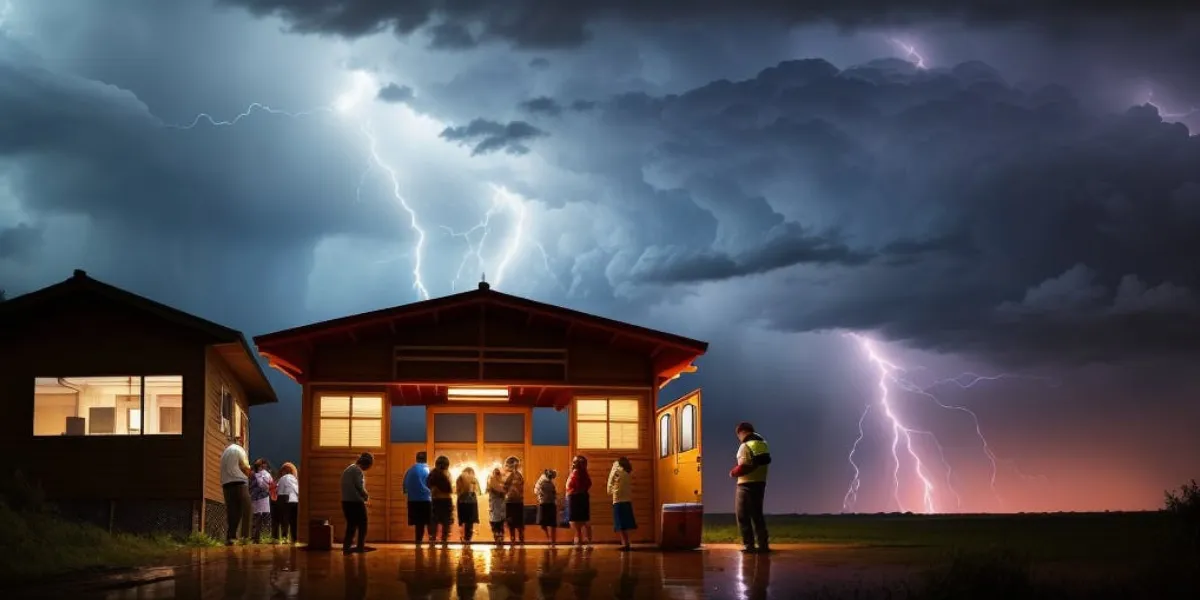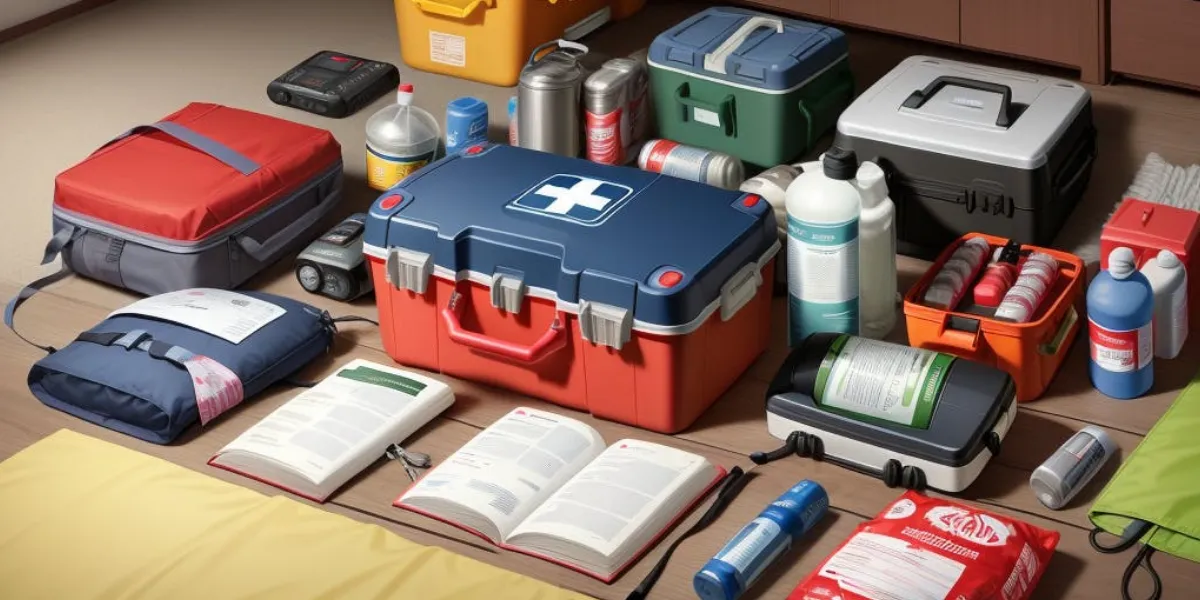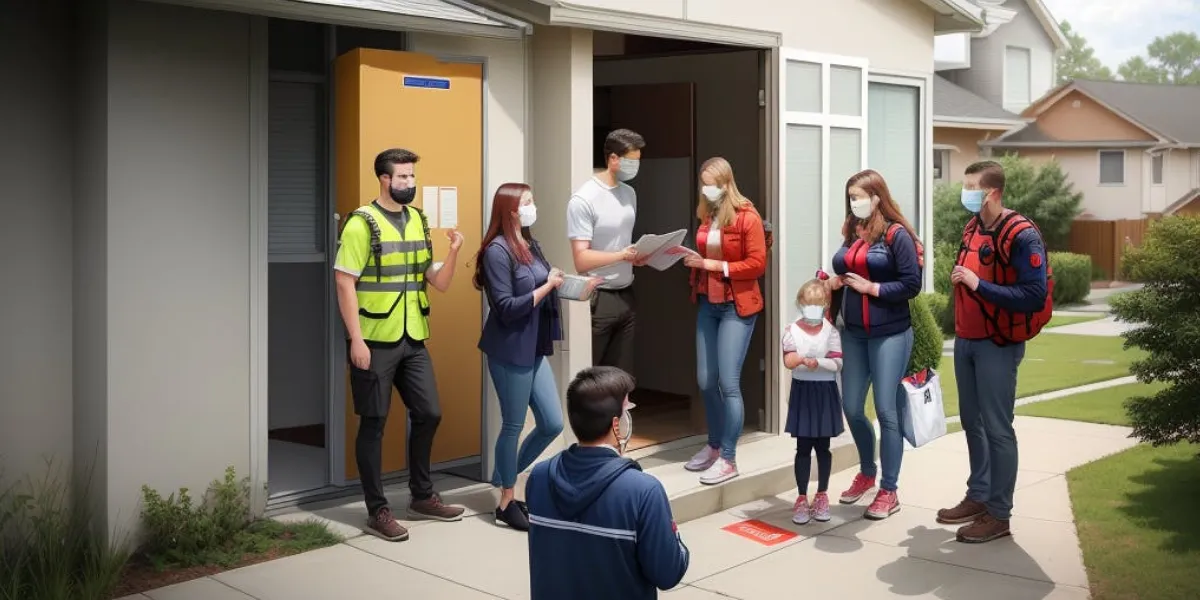
Top Disaster Preparedness Tips: Building Your Emergency Preparedness Plan And Kit
You know disasters can strike at any moment, and being prepared is the key to protecting your family, home, and property. With a little planning and the right supplies, you can ensure your safety and well-being in case of an emergency. In this article, I will guide you through the steps of natural disaster preparedness, from building your kit to making a plan for your family’s safety. Don’t wait until it’s too late - start preparing now!
Key Summaries
Effective protection of home and property requires proactive measures and a preparedness plan.
Stock up on necessary supplies like food, water, batteries, and medical kits in advance.
Make a plan for evacuation, identify safe routes, and designate a meeting point for family.
Regularly review insurance policies to ensure understanding of coverage and purchase additional coverage if necessary.
Disaster Preparedness: The Key To Protecting Your Home And Property
To effectively protect your home and property during a natural disaster, you must be prepared with a plan and take proactive measures. It’s crucial to prepare well in advance by stocking up on necessary supplies such as food, water, and medical kits.
Ensure that your home is in good condition and has proper insulation to withstand severe weather conditions.
Keep a list of emergency contacts handy, including local authorities and utility companies.
Making a plan for evacuation is essential, so identify safe routes and designate a meeting point for your family in case you get separated.
Stay informed about weather warnings and listen to local authorities for guidance.
When a disaster strikes, secure your property by closing all windows and doors, and if necessary, seek shelter in a basement or an interior room without windows.

Building Your Disaster Preparedness Kit: Essential Supplies For Survival
When preparing for natural disasters, it’s crucial to have the right supplies on hand. One of the first things you should consider is the type of disasters that are most likely to occur in your area. For example, if you live in a flood-prone region, you should include items like sandbags and waterproof containers in your kit.
A radio is also an essential item to have in your emergency kit, as it will keep you updated on the latest news and evacuation orders. Extra batteries are also essential and save worrying about the radio not working. Additionally, make sure to include a first aid kit with all the necessary supplies to treat injuries.
When building your disaster preparedness kit, think about the specific needs of your family. If you have infants or elderly family members, include items such as formula, diapers, and medication.
It’s important to have a designated container for your emergency kit, such as a sturdy backpack or a waterproof storage bin. This will ensure that your supplies stay safe and easily accessible when disaster strikes.
Lastly, don’t forget to include items that will provide warmth and comfort during challenging times. Pack extra blankets, warm clothing, and sleeping bags to help you stay cozy in case of power outages or displacement.

The Importance Of Practice: How To Prepare For An Emergency
Practice regularly to ensure you’re prepared for any emergency. When it comes to responding effectively to a disaster, practice is key. It not only familiarizes you with the necessary steps to take, but also builds confidence in your ability to handle the situation safely and efficiently when the time comes.
Start by involving your community and family members in your preparedness efforts. Collaborate with local officials and departments to create a plan that suits your location and specific needs. Regularly conduct drills to simulate emergency scenarios and practice the communication protocols established in your plan. This will help ensure that everyone knows what to do and how to stay connected during a crisis.
During these drills, test your emergency supplies and equipment to ensure they’re in working order; note anything that needs replacing. Make adjustments to your plan based on the outcomes of each practice session. Remember, practice makes perfect, and being prepared can make a significant difference in your ability to respond effectively when disaster strikes.
Emergency Preparedness: Making A Plan To Keep Your Family Safe
Ensure your family’s safety during a natural disaster by creating an emergency preparedness plan. Having a well-thought-out plan in place can make a significant difference when faced with an unexpected crisis. Start by organizing your emergency supplies and discussing potential hazards that could occur in your area. Consider the specific needs of each family member, such as medication or special equipment.
To reduce the impact of a natural disaster, identify safe areas within your home or community where you can seek shelter. This should be away from trash and sanitation areas.
Familiarize yourself with evacuation routes and establish a meeting point in case you’re separated. Create a communication plan that includes contact information for family members, neighbors, and emergency services.
When designing your plan, involve every family member to ensure that everyone understands their role and responsibilities. Assign tasks such as turning off utilities, gathering emergency supplies, or caring for pets. Practice your plan regularly to increase efficiency and effectiveness.

Contacting Local Officials And Gathering Important Information
To gather important information and contact local officials during a natural disaster, you need to know the appropriate channels to reach out to for assistance. Local officials play a crucial role in providing guidance and support during times of crisis. They can provide you with up-to-date information about the disaster and offer guidance on how to stay safe.
When disaster strikes, it’s important to contact local officials for information specific to your area. Start by identifying the relevant local authorities, such as your city or county government, and find their contact information. This can usually be found on their official website or by calling your local government office.
Additionally, it’s important to stay informed about the situation on both a local and national level. Listen to local radio or television broadcasts for updates on the emergency, road conditions, and evacuation routes. Make sure to document any important information, such as emergency phone numbers, shelter locations, and evacuation orders.

Insurance And Hazards: How To Manage Risks And Protect Your Property
When preparing for a natural disaster or emergency, it’s important to understand how to manage risks and protect your property against insurance hazards. Insurance is a crucial aspect of disaster preparedness, as it can help you reduce the impact of a natural disaster on your property.
To effectively manage risks, it’s essential to have the right insurance coverage in place. This means making sure that your property is adequately protected against potential hazards such as floods, earthquakes, hurricanes, or wildfires.
To manage risks and protect your property, start by reviewing your current insurance policies. Make sure you understand what’s covered and what’s not. Consider purchasing additional coverage if necessary to address any gaps in protection. It’s also important to regularly update your policies to reflect any changes in your property or circumstances.
In addition to insurance, there are other steps you can take to protect your property from natural disasters. This includes implementing preventive measures such as installing storm shutters, reinforcing your roof, or securing loose objects. Regular maintenance of your property can also help reduce the risk of damage during a natural disaster.
Frequently Asked Questions
What is natural disaster preparedness?
Natural disaster preparedness refers to the process of taking steps to reduce the impact of disasters and be prepared for the likelihood of such events. It involves creating a plan to ensure the safety and well-being of individuals and communities.
Why is it important to be prepared for natural disasters?
Being prepared for natural disasters is crucial because it allows individuals and communities to protect their lives and property. It helps to reduce the risk of injury, enables timely response and recovery, and ensures that basic needs are met during and after a disaster.
How can I identify the type of natural disasters that are likely to happen in my area?
You can identify the type of natural disasters that are likely to happen in your area by researching the local climate and geography. This information, along with historical data and advice from local authorities, can help you determine which types of disasters are most common in your region.
What should I include in my natural disaster preparedness plan?
Your natural disaster preparedness plan should account for the specific needs of your household. It should include important contact information, escape routes, a communication plan, emergency supplies such as food, water, and medical necessities, and any specific actions that need to be taken in the event of a disaster.
How long should I be prepared to be self-sufficient during a natural disaster?
It is recommended to be self-sufficient for at least three days during a natural disaster. This means having enough food, water, and necessary supplies to sustain yourself and your household for that period of time, as emergency response and recovery efforts may take some time to reach your area.
Should I have a plan for my vehicle in case of a natural disaster?
Yes, it is important to have a plan for your vehicle in case of a natural disaster. This includes keeping your gas tank full at all times, knowing the evacuation routes and having alternate routes planned, and having emergency supplies in your vehicle such as a first aid kit, non-perishable food, and blankets.
How can I stay informed about potential natural disasters?
One way to stay informed about potential natural disasters is by having a weather radio or a reliable source of information such as the local news. It is also important to sign up for emergency alerts and notifications provided by local authorities or organizations responsible for disaster management.
What should a homeowner do in the event of a natural disaster?
In the event of a natural disaster, a homeowner should follow the instructions and guidance provided by local authorities. This may include evacuating the area if necessary, turning off utilities such as gas and electricity, securing the property, and having important documents and belongings easily accessible in case of evacuation.
How can I reduce the impact of natural disasters on my home?
There are several measures you can take to reduce the impact of natural disasters on your home. These include securing heavy furniture and objects, keeping trees and shrubs trimmed, reinforcing windows and doors, installing smoke detectors and fire extinguishers, and having a plan in place for emergencies such as fires.
What factors should I consider when creating my natural disaster preparedness plan?
When creating your natural disaster preparedness plan, you should consider factors such as the specific threats in your area, the climate and weather patterns, the needs of individuals in your household, and any additional resources or support that may be available from local authorities or organizations.
Conclusion
You’ve taken the necessary steps to protect your home and property from natural disasters. By building a disaster preparedness kit, practicing emergency procedures, and making a plan to keep your family safe, you’ve increased your chances of survival. Remember to contact local officials for important information and manage risks through insurance. Stay informed and prepared, and you’ll be ready to face any disaster that comes your way.

